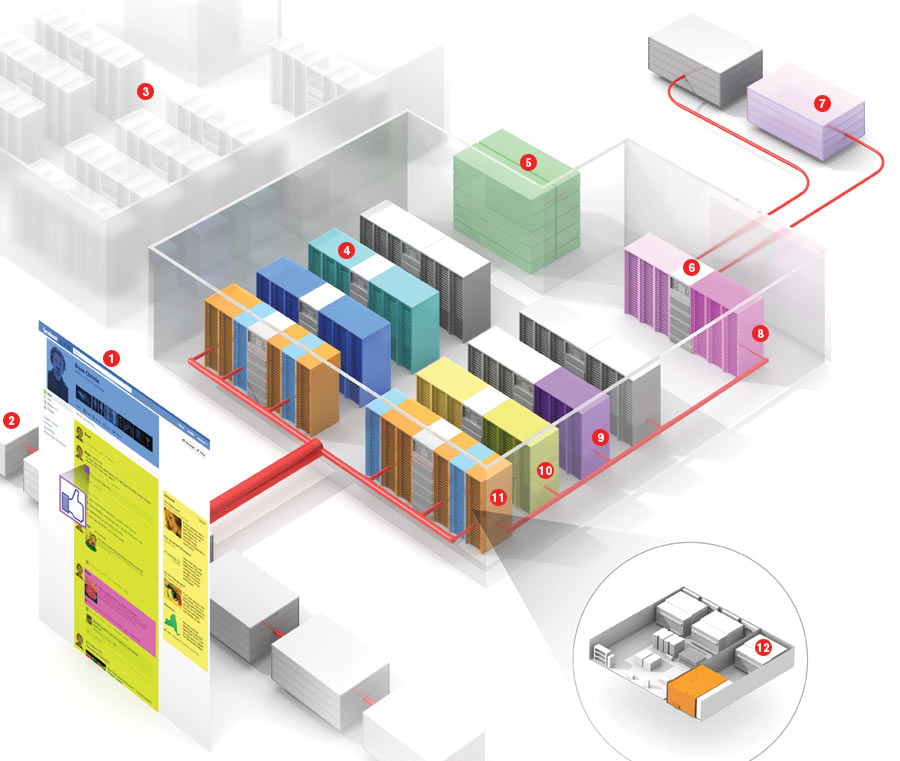Social Machinery

A single page on a social-networking website is an amalgam of many different technologies. Each user is served a unique page assembled from up-to-the-second information from multiple sources. During assembly, attention must be paid to each user’s personal preferences, the privacy settings of the user’s friends (and friends of friends), and the advertisements that seem most likely to find a favorable reception (see “Managing Users by the Million”). Here we show some of the hardware and software required to support key elements of a typical page belonging to one of Facebook’s 600 million active users.
The hardware depicted is largely located in the company’s new 31,000-square-meter data center in Prineville, Oregon. This facility uses evaporative cooling to control temperatures. Facebook claims that the cooling technology, together with a new electricity distribution system, has made the data center 38 percent more energy efficient than a traditional center, with operating costs about 24 percent lower.
Facebook has made the designs for the Prineville data center, and the customized servers within it, available to anyone—a decision that reflects in the physical sphere the social network’s heavy use of open-source projects in its software.
Image Credit: Bryan Christie Design
Keep Reading
Most Popular
Large language models can do jaw-dropping things. But nobody knows exactly why.
And that's a problem. Figuring it out is one of the biggest scientific puzzles of our time and a crucial step towards controlling more powerful future models.
The problem with plug-in hybrids? Their drivers.
Plug-in hybrids are often sold as a transition to EVs, but new data from Europe shows we’re still underestimating the emissions they produce.
Google DeepMind’s new generative model makes Super Mario–like games from scratch
Genie learns how to control games by watching hours and hours of video. It could help train next-gen robots too.
How scientists traced a mysterious covid case back to six toilets
When wastewater surveillance turns into a hunt for a single infected individual, the ethics get tricky.
Stay connected
Get the latest updates from
MIT Technology Review
Discover special offers, top stories, upcoming events, and more.